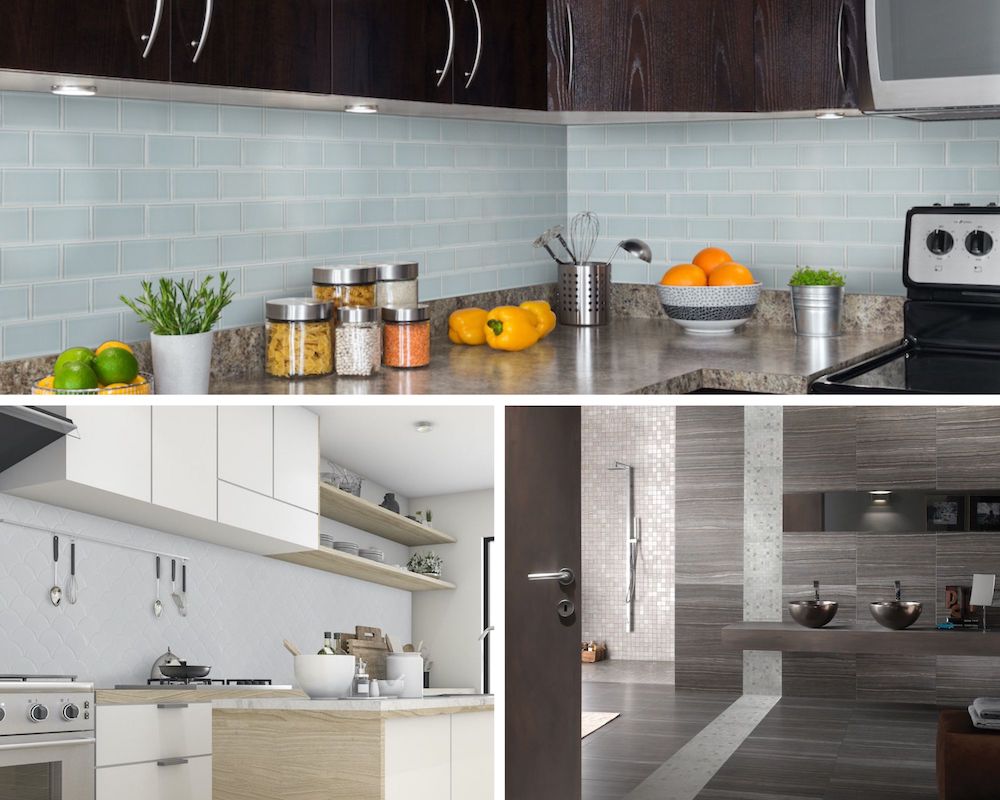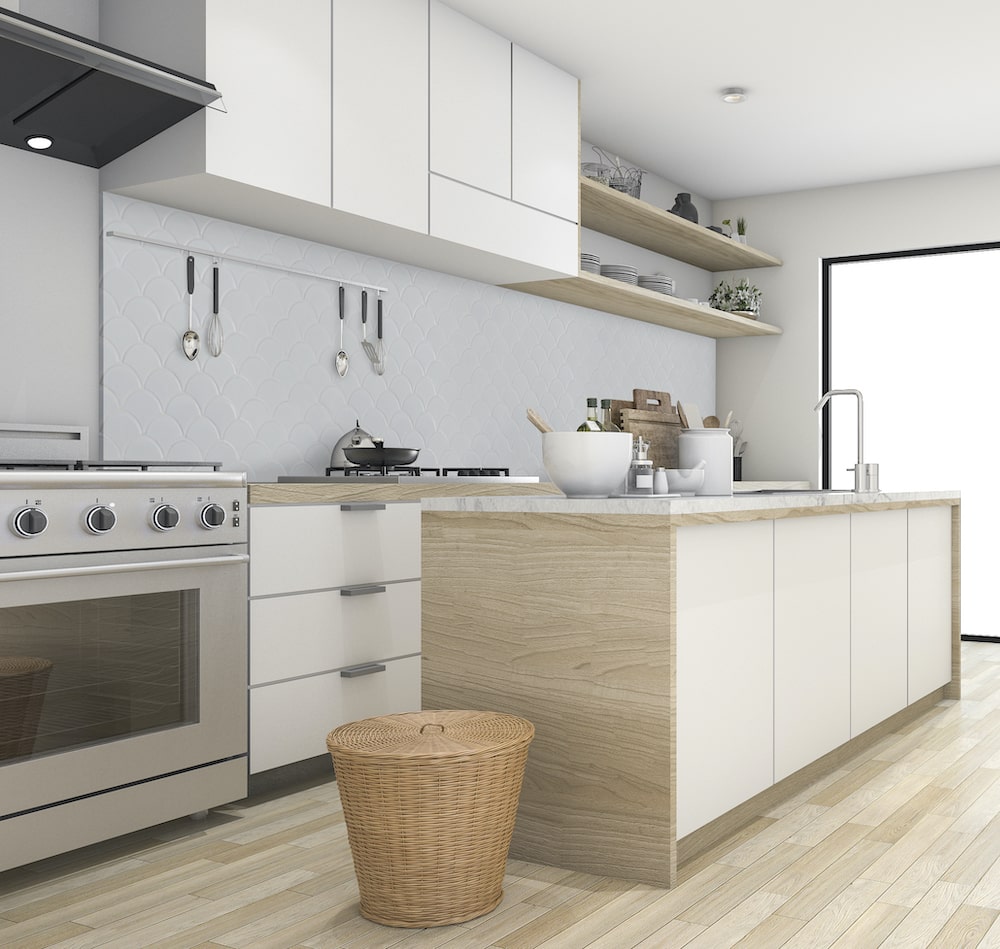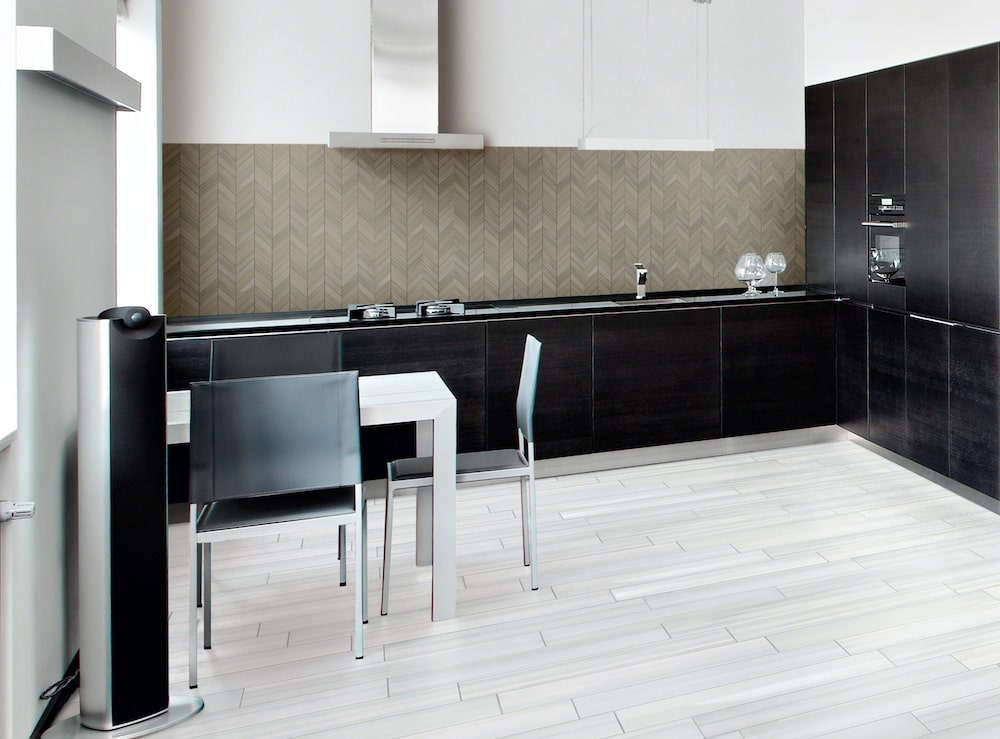The Difference Between Sanded Vs. Unsanded Grout For Backsplash Tile
September 21, 2018 
When you’re reading the instructions for grouting tile, the first item on the list will be choosing the type of grout you plan to use with your backsplash tile. Choosing between the two types of tile grout — sanded vs. unsanded — is more than just a matter of personal preference. Unsanded grout costs a bit more, but it’s also not about the price, or about which is better. Both grout types have specific applications.
Sanded Grout is the most commonly used type of tile grout, because it’s well suited to most applications. It contains very fine quartz or silica sand grains; these act as a “filler,” but more importantly, sand gives the grout additional strength. Over time, grout is prone to shrinkage or slight shifting; the sand makes it better at resisting cracks. Sanded grout is recommended for grout lines that are wider than ? inch, since it can be difficult to insert sanded grout into very narrow spaces.
Unsanded grout is most often used on vertical surfaces, such as a kitchen backsplash. Since wall tile installations with narrow grout lines are less prone to cracking, the extra durability of sanded grout won’t matter. Unsanded grout is recommended for grout lines that are ? inch or smaller, which is typical of most backsplash tile installations. It is also recommended for glass tiles, metal tiles, and polished stone, because sanded grout can scratch them during installation and cleanup. It’s easier to work with, and adheres better to vertical surfaces.
Therefore, the most important consideration is the width of your grout lines, which depends upon the type of tile you’ll use. If you’re using a pre-meshed mosaic, you will have no control over the size of your grout lines. Typically, backsplash tile made of glass, metal, or porcelain can be installed with smaller grout lines than natural stone or some types of ceramic tile. Follow the recommendations provided by the tile manufacturer regarding tile spacing.
White Glossy Fish Scale Pattern Mosaic

White Glossy Fish Scale Patten Mosaic
With its lustrous white surface, White Glossy Fish Scale Patten Mosaic tile embodies a pristine charm reminiscent of glistening scales, elevating the ambiance to one of pure sophistication. The glossy finish catches and reflects light, illuminating the room with a radiant shimmer that is both enchanting and refined. Whether used as a backsplash in a bathroom or kitchen, this tile is bound to become the centerpiece of attention, transforming the entire room into a sanctuary of serenity and luxury.
Ice Subway
With a soft blue-gray shine, Ice Subway is another modern twist on an old favorite. This crystallized glass tile offers just a hint of color, making this elegant backsplash tile an easy mate to brighten a dark kitchen or even compliment a pale-colored kitchen. It’s a minimalist’s dream, with just enough pop to make the room feel finished and welcoming.
Watercolor Grigio Chevron Tile

Watercolor Grigio Chevron Tile
Porcelain tile that resembles wood has been a big trend of late. Watercolor Grigio Chevron Tile looks superb in a parquet-inspired chevron pattern. The soft gray tones of this backsplash tile complement the pattern, adding a sense of movement without totally dominating the room. It looks great in small backsplashes, and even better expanded over an accent wall.
Grey Porcelain Tile
Would you use wood as a bathroom backsplash? How about in the shower surround? With wood-look Grey Porcelain Tile porcelain tile, it’s not a problem at all. This nature-inspired tile is available in two plank-shaped sizes, so you can install it in modern-style rows as shown here, or staggered for a more traditional look. Matching grout enhances its realism.
Even the most complex-looking backsplash tile mosaics can be a DIY installation when you have the right tools — and the right grout. Choose your favorite tile first, then consider the ideal spacing for your backsplash designs, and the rest will be a simple matter of following instructions. You’ll be a tiling pro in no time.
If you still have questions about what grout is best for your tile backsplash, please chat with our experienced team at MSI online, or find an authorized MSI dealer near you to visit a showroom in person.
READ MORE ABOUT DIFFERENT TYPES GROUT
Sanded Vs. Non-Sanded Grout Backsplash


